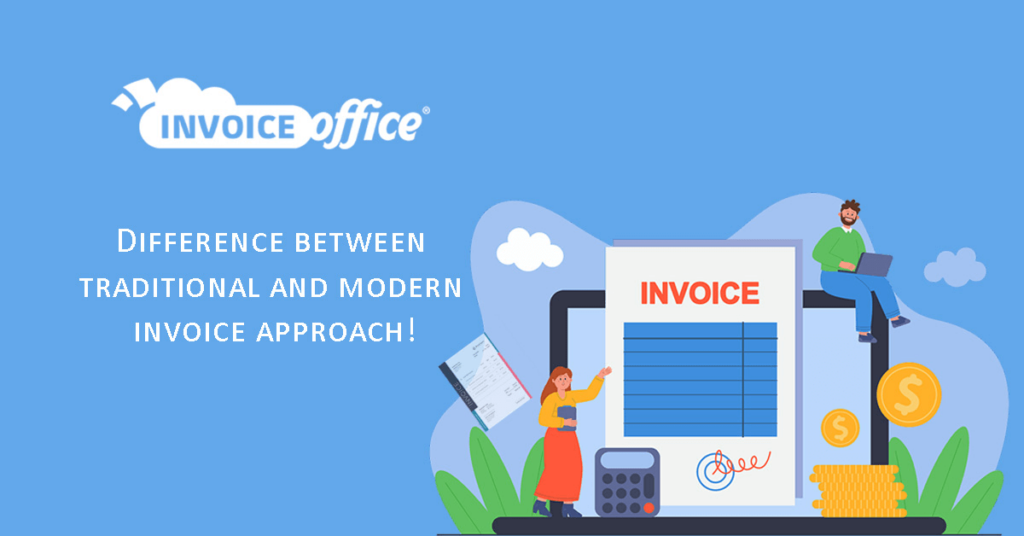Invoice is one of the most important aspects of the business. As we all know the traditional approach to invoicing was a manual, paper-based process that included sending and receiving invoices, tracking their payment status, and managing customer accounts. Whereas, Modern invoicing, on the other hand, has been revolutionized by the use of modern technology and digital platforms. These platforms offer new opportunities for businesses to automate and streamline invoice management processes.
Additionally, modern invoicing software and tools are versatile and powerful enough to offer new features like built-in payment acceptance, data-driven analytics, and other enterprise-level tools to businesses. The main difference between traditional and modern invoice approaches is in how businesses manage the process and how much automation and customization is available.
But this does not come to an end here and that’s why here we are presenting a detailed overview of the differences between traditional and modern invoices. Let’s have a look!
Differences to know:
1. Format:
When talking about the traditional approach to invoicing, the traditional format was usually a paper-based invoice. Modern invoices are more digital, where the invoices are sent electronically and can be accessed online.
2. Automation:
Traditional invoice processes often took hours or even days to process, because all the paperwork was done manually. Modern invoices are more automated and can be processed much quicker.
3. Accuracy:
With traditional invoices, mistakes and miscalculations were more common due to manual entry. Modern invoices use billing software that are more accurate thanks to the use of software and payment systems.
4. Speed:
Traditional invoices relied on traditional mail, which could take days or even weeks for delivery. Modern invoices can be sent electronically so payments can be received and processed much quicker.
5. Security:
Traditional invoices were often vulnerable to fraud and mistakes, as the information contained was not secured. Modern invoices are more secure and use encryption technology, protecting sensitive customer data.
6. Payment Options:
With traditional invoices, customers were usually only able to pay by check or cash. With modern invoices, customers have many more payment options such as credit and debit cards, online payments, etc.
7. Tracking:
Traditional invoices were more difficult to track and monitor, as there was no easy way to know the whereabouts of a particular invoice. Modern invoices can be tracked and monitored more easily, providing more visibility into the process.
8. Streamlining:
Traditional invoices often had to be manually entered into multiple systems, making the process more time-consuming and cumbersome. Modern invoices are streamlined, allowing for multiple systems and processes to be handled more quickly and efficiently.
9. Remittance:
With traditional invoices, customers often had to manually send the payment information along with their payment (via check or cash). Modern invoices can be paid electronically with the help of Invoicing software, with payment information sent along with the invoice.
10. Reminders:
Traditional invoices had to be manually tracked, which meant customers couldn’t always be certain when their payment was due. Modern invoices can be set to remind customers when a payment is due, making it easier to ensure the invoice is paid on time.
11. Discounts:
With traditional invoices, it was difficult to offer discounts to customers and process them in a timely manner. Modern invoices allow for discounts to be added easily and quickly, allowing customers to receive the discounts that they qualify for.
Conclusion:
In conclusion, there are many differences between traditional and modern invoicing approaches. Traditional paper-based invoices were slower and more vulnerable to fraud and mistakes, and there were fewer payment options available. Modern invoices are more streamlined and automated, offer more payment options, are more secure and can provide customers with discounts. For modern invoicing, we suggest you use the INVOICE OFFICE. This is one of the best software available in the market for catering to your business needs!




